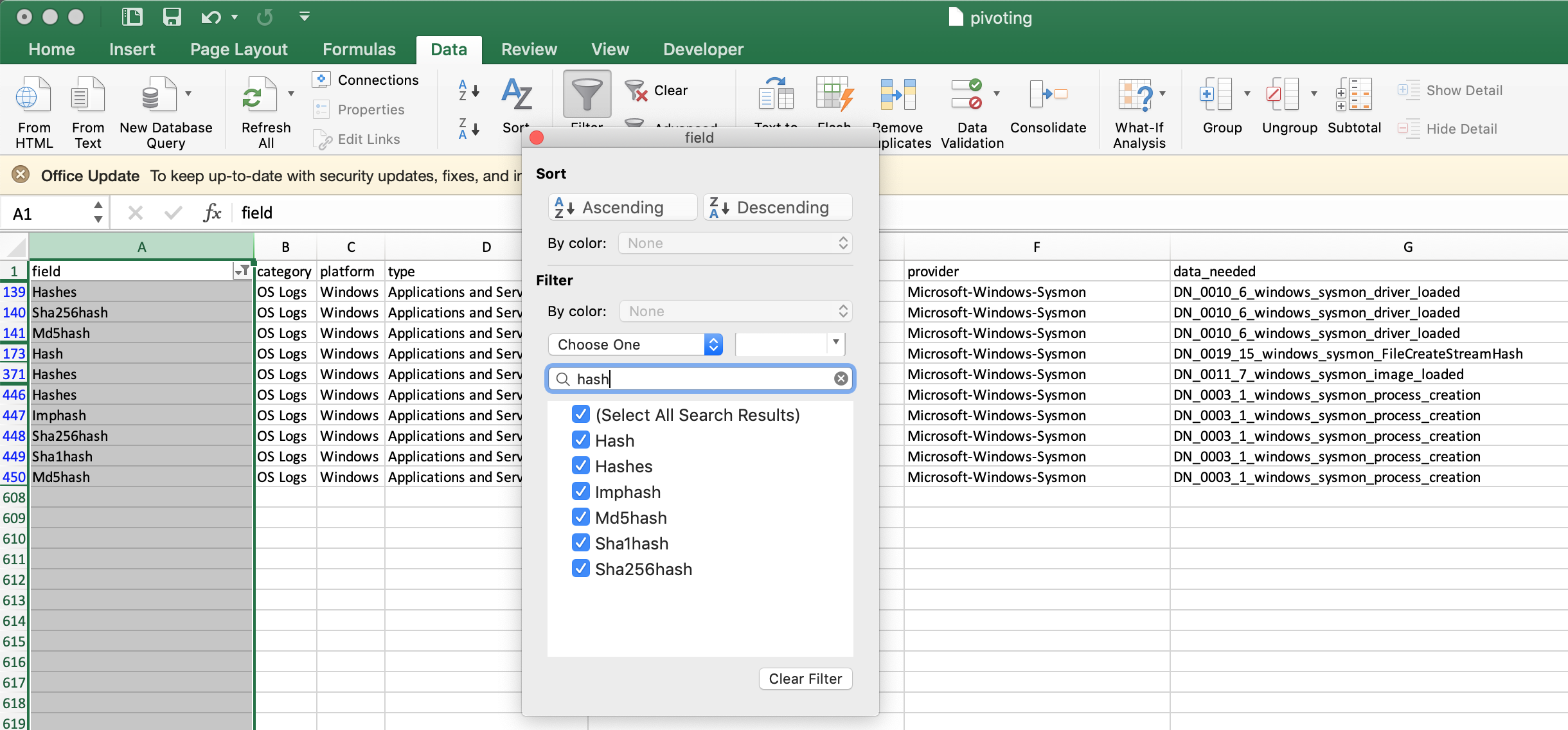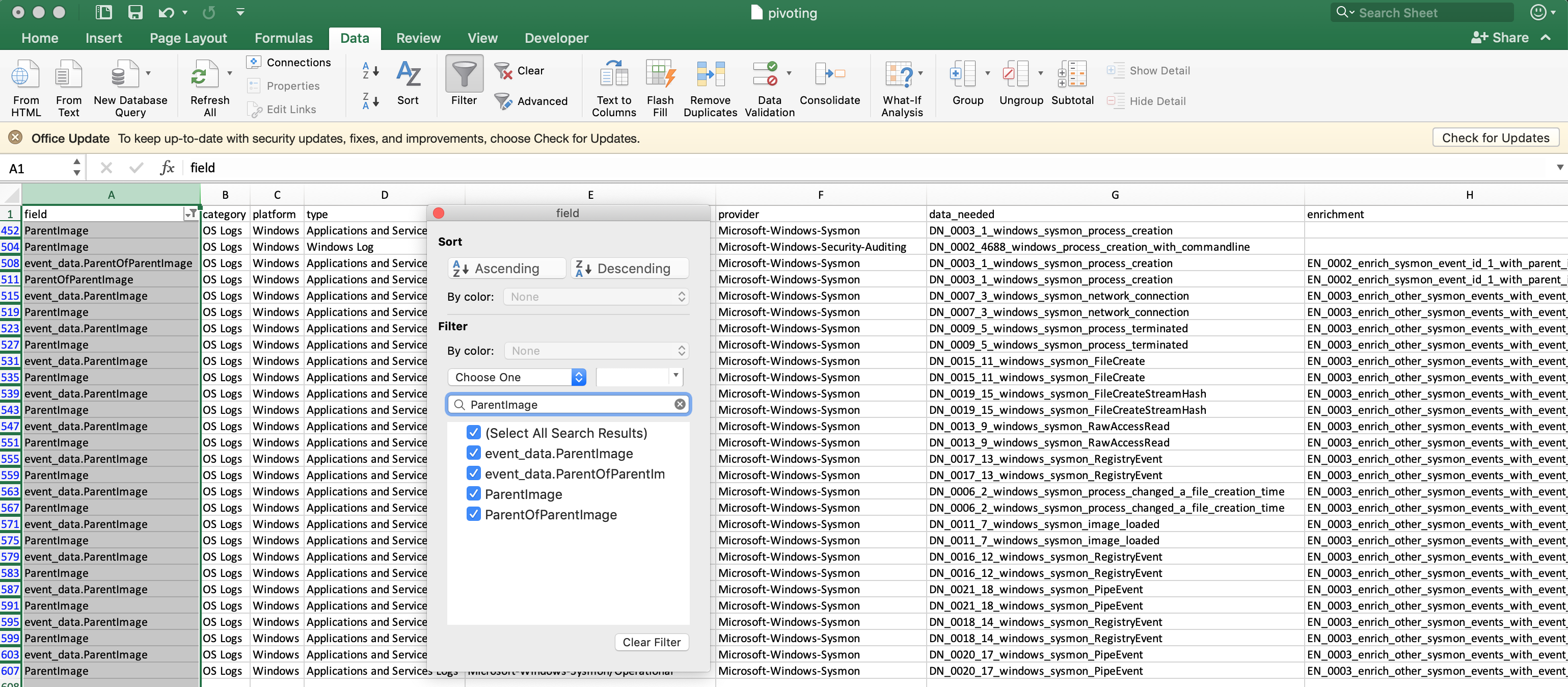The atc-data is a community-driven project designed to accumulate and describe specific data that is required by Security Operations, such as Threat Detection/Hunting and Incident Response.
It includes a description of event logs, network telemetry, data lists, and so on. And with that — a detailed description of what has to be configured and how the data has to be processed to be used in the Security Operations.
The main advantage of the project is a clear, exact definition of where specific data is required, whether it's a Detection Rule, Response Action, or Visualisation.
The main use cases:
- Data collection prioritization. And with that — Threat Detection/Hunting and Incident Response capabilities development
- Gap analysis — determine "coverage" of existing Threat Detection/Hunting and Incident Response capabilities, depending on data collected
The main resources:
- Automatically generated atc-data website is the best place for getting details about existing analytics
- Automatically generated Atlassian Confluence knowledge base - exporting functionality demonstration
The ATC RE&CT project inherits the "Actionable Analytics" paradigm from the ATC project, which means that the analytics are:
- human-readable (
.md) for sharing/using in operations - machine-readable (
.yml) for automatic processing/integrations - executable by Incident Response Platform (TheHive Case Templates only, at the moment)
Simply saying, the analytics are stored in .yml files, that are automatically converted to .md documents (with jinja) and .json TheHive Case Templates.
to be collected to produce detection of specific Threat
This entity expected to simplify communication with SIEM/LM/Data Engineering teams. It includes the next data:
- Sample of the raw log to describe what data they could expect to receive/collect
- Description of data to collect (Platform/Type/Channel/etc) — needed for calculation of mappings to Detection Rules and general description
- List of fields also needed for calculation of mappings to Detection Rules and Response Playbooks, as well as for
pivoting.csvgeneration
Response Action is a description of a specific atomic procedure/task that has to be executed during the Incident Response. It is an initial entity that is used to construct Response Playbooks.
Here is an example of Response Action:
- Automatically created Markdown file
- Automatically created mkdocs web page
- Automatically created Confluence page
The categorization aims to improve Incident Response process maturity assessment and roadmap development.
need to be configured on data source to be able to collect Data Needed
This entity expected to explain SIEM/LM/Data Engineering teams and IT departments which logging policies have to be configured to have proper Data Needed for Detection and Response to specific Threat. It also explains how exactly this policy can be configured.
for specific Data Needed which required for some Detection Rules
This entity expected to simplify communication with SIEM/LM/Data Engineering teams. It includes the next data:
- List of Data Needed which could be enriched
- Description of the goal of the specific Enrichment (new fields, translation, renaming etc)
- Example of implementation (for example, Logstash config)
This way you will be able to simply explain why you need specific enrichments (mapping to Detection Rules) and specific systems for data enrichment (for example, Logstash).
The atc-data generates pivoting.csv with a list of all fields (from Data Needed) mapped to description of Data Needed for very specific purpose — it provides information about data sources where some specific data type could be found, for example domain name, username, hash etc:
At the same time it highlights which fields could be found only with specific enrichments:
- Python 3.7
- PyYAML, mkdocs and jinja2 Python libraries. They could be installed with the following command:
python3 -m pip install -r requirements.txt
Would you like to become one? You are very welcome! Our CONTRIBUTING guideline is a good starting point.
The roadmap and related discussions could be found in the project issues.
See the LICENSE file.



